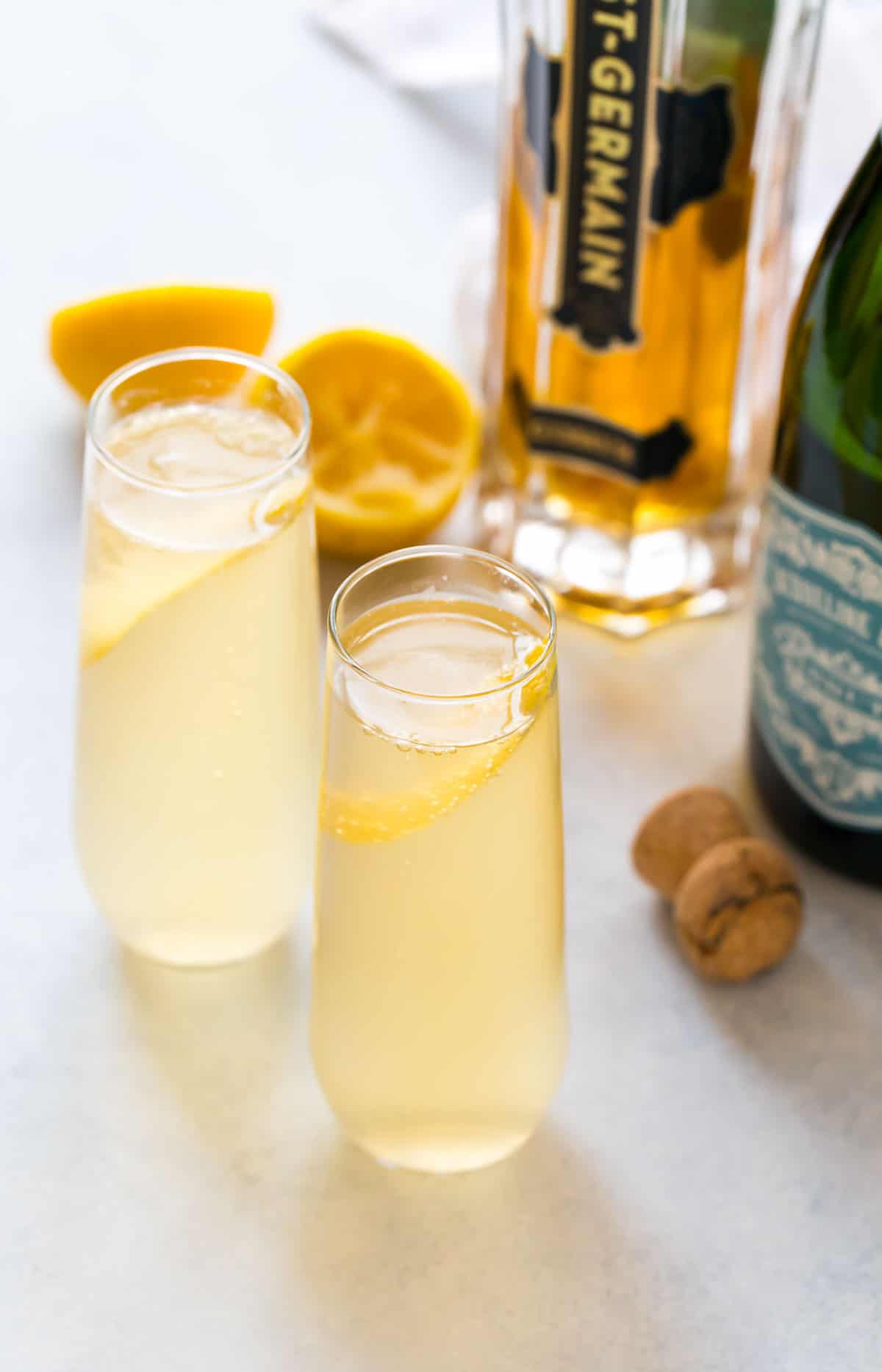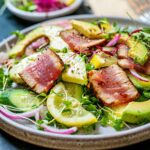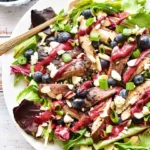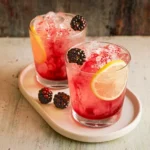French cocktails are a beautiful blend of flavor, art, and tradition. From the streets of Paris to the sunny Riviera, these drinks offer a taste of French sophistication and charm.
Why should you explore these 15 French cocktails? They not only showcase the creativity and elegance of French bartending but also allow you to experience a piece of French culture in every sip.
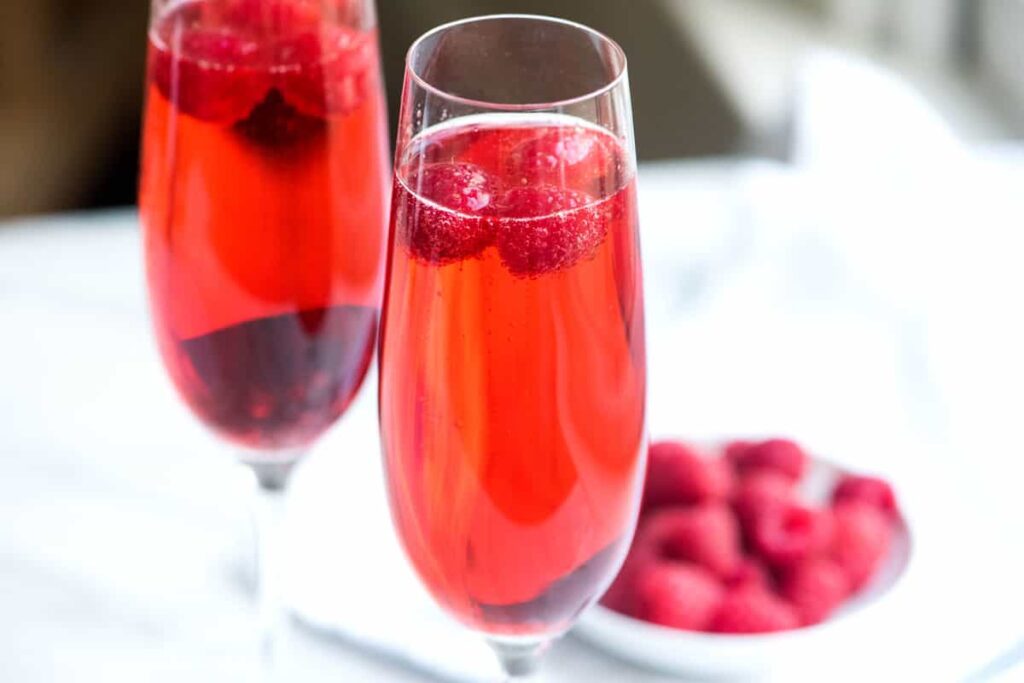
1) Kir Royale
The Kir Royale is a classic French champagne cocktail. It’s elegant and simple to make. You only need two ingredients: champagne and crème de cassis.
Start by pouring a small amount of crème de cassis into a chilled champagne flute. This liqueur adds a sweet, berry flavor and a deep red color.
Next, slowly add the champagne. Pour carefully to maintain the bubbles. Some people prefer their Kir Royale sweeter, so you can adjust the amount of crème de cassis to your taste.
For a decorative touch, you can add fresh raspberries. This will give the cocktail a burst of fruity flavor. Enjoy your Kir Royale as a sophisticated drink for any occasion.
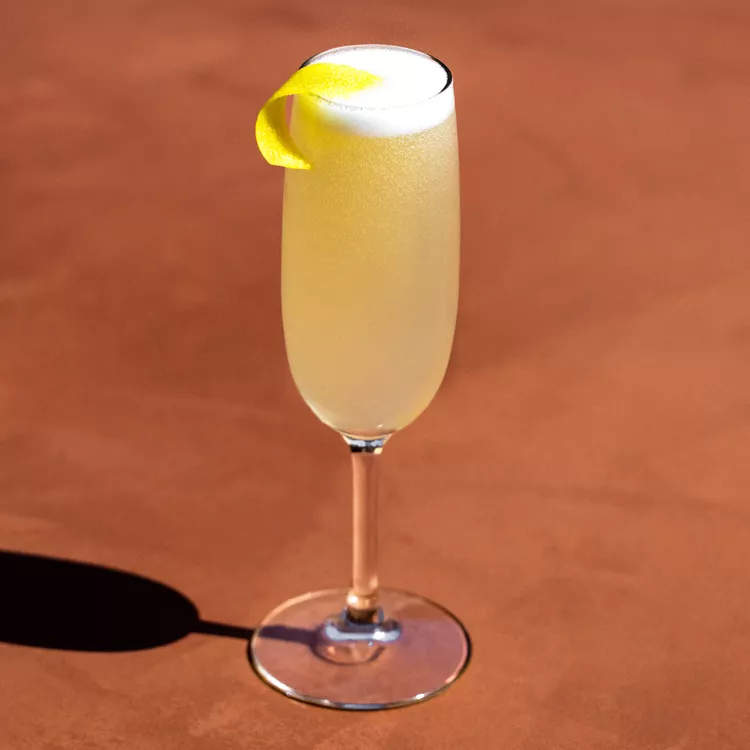
2) French 75
The French 75 is a classic cocktail known for its elegance and refreshing taste. It first appeared during World War I and has been a staple in cocktail culture ever since. You’ll often see it served at celebratory events.
To make a French 75, you start with a base of gin. Combine it with lemon juice and simple syrup. These ingredients are shaken with ice until well-chilled.
After shaking, strain the mix into a Champagne flute. Then, top it off with Champagne or any sparkling wine. This gives the drink its fizzy and festive character.
A lemon twist is the usual garnish for this cocktail. It adds a touch of citrus aroma and visual appeal. You can enjoy this drink at brunch, parties, or anytime you want something light and bubbly.
The French 75 is appreciated for its balance of sweet, tart, and bubbly flavors. It’s simple to make but offers a sophisticated taste that appeals to many. Make sure your ingredients are well-chilled for the best experience.
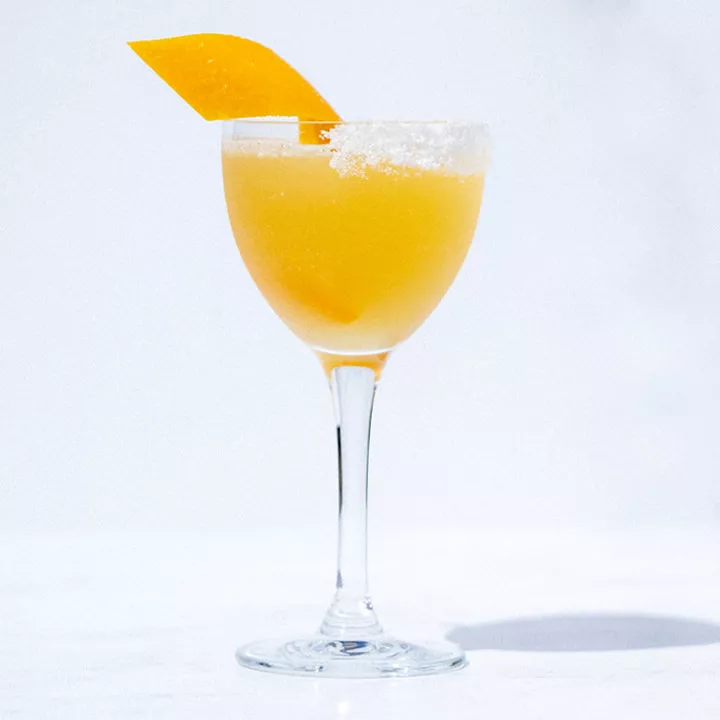
3) Sidecar
The Sidecar is a classic French cocktail made with cognac, orange liqueur, and lemon juice. It’s a mix of sweet, tart, and strong flavors.
First, chill a coupe glass. Rub a lemon wedge around the rim, then dip it in sugar.
In a cocktail shaker, combine ice, 2 ounces of cognac, 1 ounce of orange liqueur, and 3/4 ounce of lemon juice.
Shake the mixture vigorously until well-chilled. This usually takes about 20-30 seconds.
Strain the mixture into the prepared coupe glass. Garnish with a lemon or orange twist.
The balance of citrus and cognac makes the Sidecar a favorite among cocktail enthusiasts. It’s both refreshing and elegant.
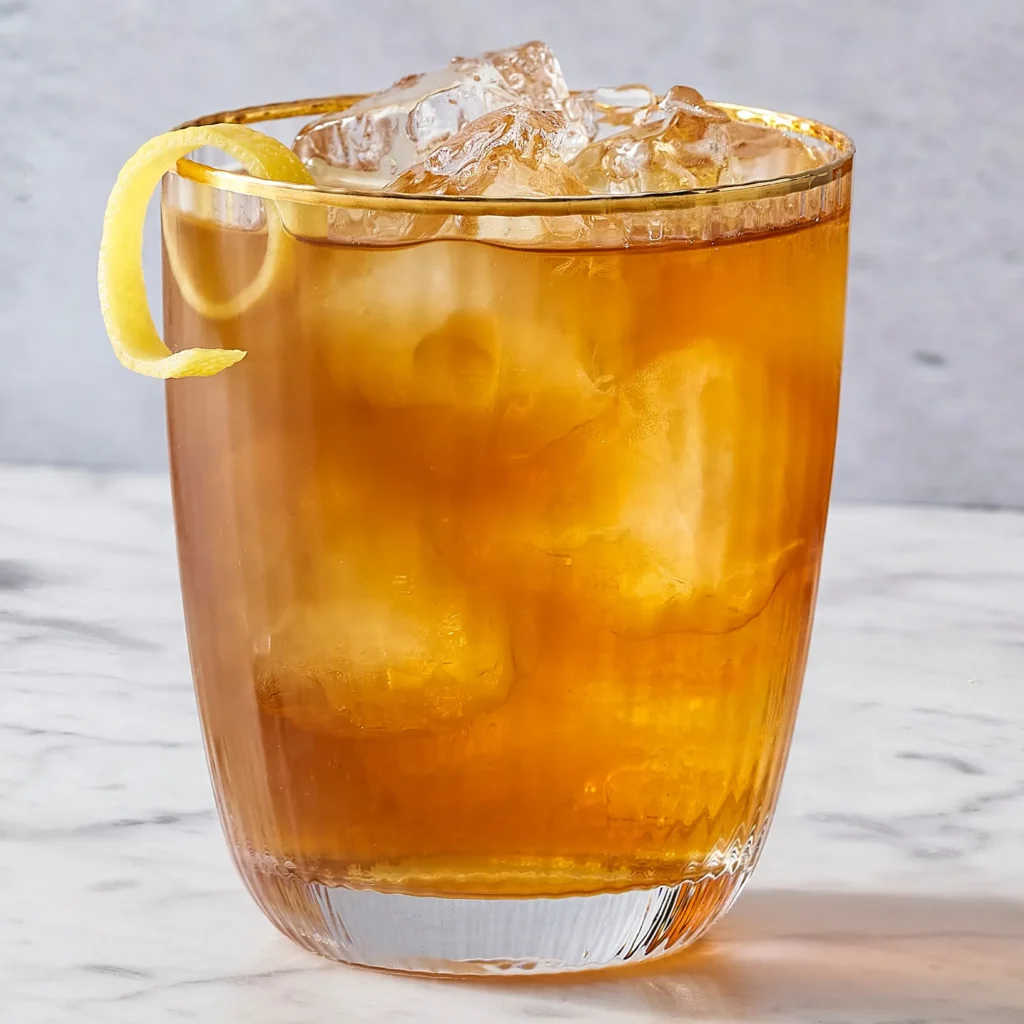
4) Vieux Carré
The Vieux Carré is a classic cocktail from New Orleans. It’s named after the French term for the French Quarter, “the old square.” Walter Bergeron created this drink in the 1930s at the Hotel Monteleone.
To make a Vieux Carré, you need rye whiskey, cognac, and sweet vermouth. Add a touch of Bénédictine, along with Angostura and Peychaud’s bitters. These ingredients are mixed with ice and then strained into a glass.
Garnish the cocktail with a cherry or a lemon twist. Sipping a Vieux Carré is like taking a journey through the flavors of New Orleans. The combination of ingredients creates a balanced and complex taste.
This drink is perfect for those who enjoy a rich and powerful cocktail. It’s best enjoyed slowly, letting each component show its character.
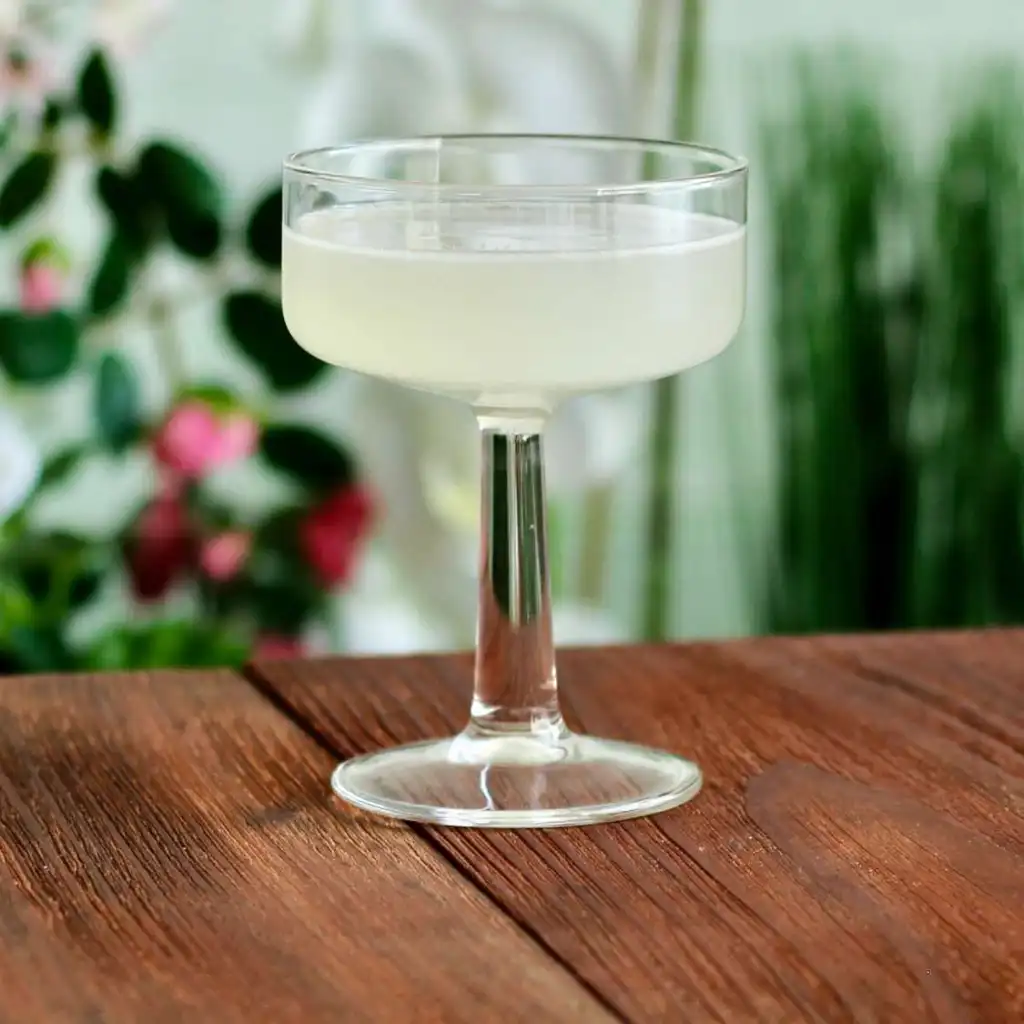
5) Corpse Reviver No.2
The Corpse Reviver No. 2 is a classic cocktail that dates back to the early 20th century. It’s part of a group of drinks known for their supposed ability to “revive” someone from a hangover.
You make this cocktail with equal parts gin, Lillet Blanc (a French aperitif), Cointreau (orange liqueur), and fresh lemon juice. A dash of absinthe adds a unique touch.
To prepare, you rinse a chilled glass with absinthe, then discard the excess. Shake the remaining ingredients with ice until chilled, then strain the mixture into the prepared glass.
This drink is known for its balanced flavor profile. The gin and Lillet Blanc provide a solid foundation, while the lemon juice adds brightness. The Cointreau gives it a sweet, citrusy note, and the absinthe offers a hint of herbal complexity.
Enjoy this drink chilled and consider it a great example of French mixology.
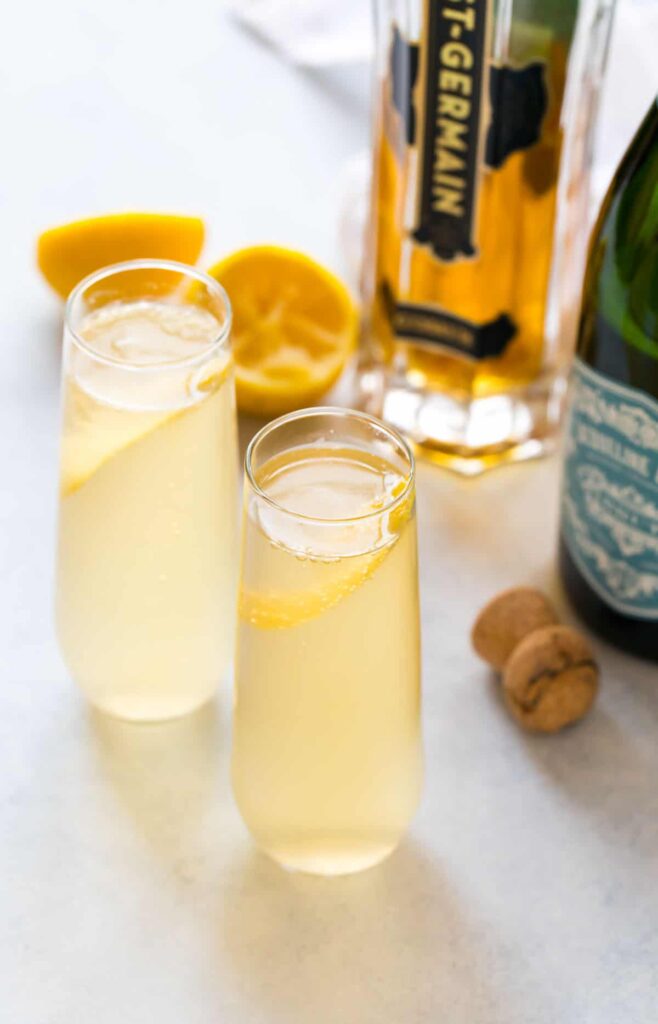
6) St-Germain Cocktail
The St-Germain Cocktail is a delightful and refreshing drink that highlights the unique flavors of elderflower liqueur. This cocktail is known for its light, floral notes and a touch of sweetness, making it a favorite for many.
You start by mixing St-Germain elderflower liqueur with sparkling wine or champagne. This combination creates a bubbly, effervescent base that is both elegant and easy to drink.
Adding a splash of club soda provides a subtle hint of fizz, enhancing the cocktail’s refreshing quality. A squeeze of fresh lemon juice adds a bright, citrusy zing that balances well with the floral notes of St-Germain.
Garnish your St-Germain Cocktail with a lemon twist or a sprig of fresh mint. This adds a touch of visual appeal and a hint of fragrance, elevating your drink to the next level.
Serve the St-Germain Cocktail in a champagne flute or a highball glass to keep it classy. This cocktail is perfect for brunches, celebrations, or any occasion where you want to impress your guests with something a bit different but undeniably delicious.
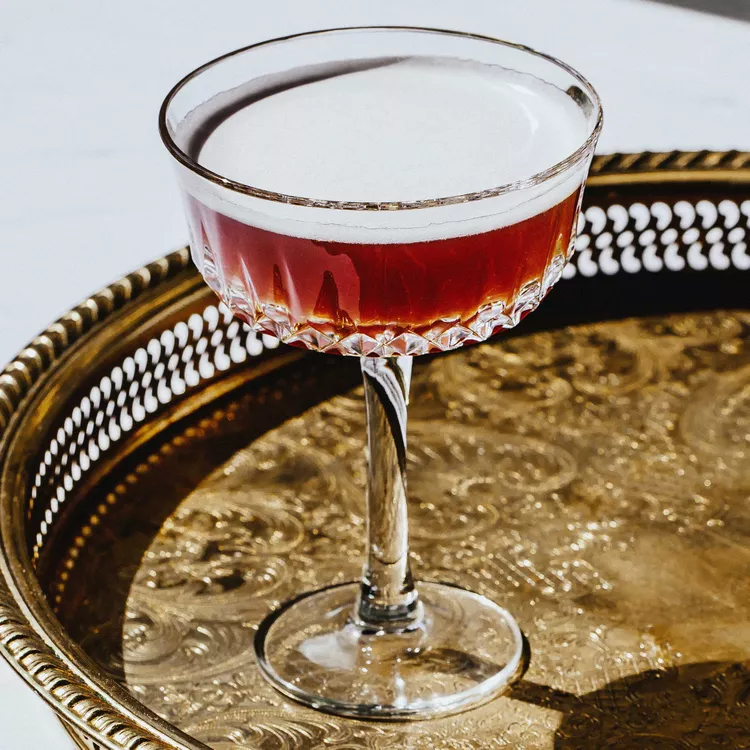
7) French Martini
The French Martini is a chic and flavorful cocktail that gained popularity in the 1990s. It combines vodka, pineapple juice, and Chambord, a raspberry liqueur. This mix of ingredients creates a delightful blend of sweetness and tartness.
To make a French Martini, start by pouring 2 ounces of vodka, 1/2 ounce of Chambord, and 1 1/2 ounces of pineapple juice into a cocktail shaker filled with ice.
Shake the mixture vigorously for about 20 to 30 seconds. The shaking helps to chill the drink and combines the ingredients well, creating a frothy texture.
Once shaken, strain the mixture into a martini glass. You can garnish the cocktail with a raspberry or a twist of lemon peel for a classy finish.
The result is a smooth and refreshing drink with a light pink hue, making it visually appealing and perfect for any occasion. Enjoy the balance of flavors that the French Martini offers.
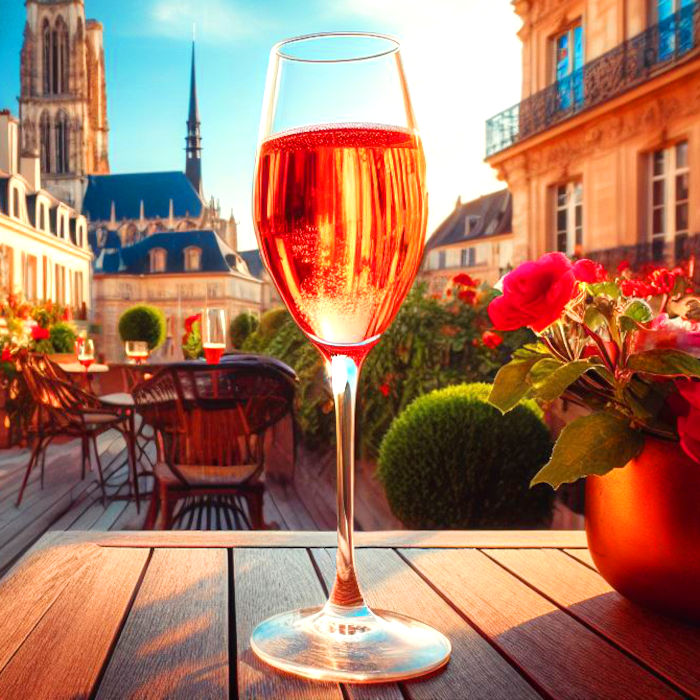
8) Kir
Kir is a classic French cocktail that is simple yet elegant. It consists of two main ingredients: dry white wine and crème de cassis, a blackcurrant liqueur. Crème de cassis adds a sweet, fruity flavor and a deep red color to the drink.
Traditionally, Kir is made with Bourgogne Aligoté, a dry white wine from Burgundy. However, you can use any dry white wine that you prefer. Chablis or Muscadet are also good choices.
To make a Kir, pour about 1/2 to 1 ounce of crème de cassis into a wine glass. Then, top it off with the dry white wine. The ratio can be adjusted based on your taste – some people like more liqueur for a sweeter drink, while others prefer less.
This cocktail is typically served as an apéritif before meals. It is popular in France and appreciated for its simplicity and refreshing taste. It dates back to the 19th century and became particularly popular after World War II.
Kir is a delightful way to start your evening with a touch of French elegance. It’s easy to make and allows you to enjoy the unique flavor of blackcurrant liqueur paired with your favorite white wine.
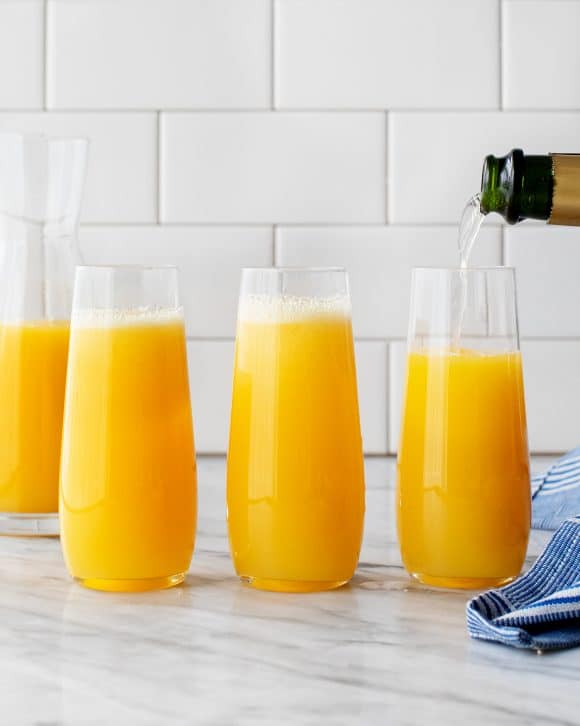
9) Mimosa
A Mimosa is a classic and beloved cocktail that combines bubbly Champagne with refreshing orange juice.
To make a Mimosa, start by chilling your Champagne. Pour the Champagne into a flute and then top it with orange juice. The mix is simple, yet elegant.
If you want a fun twist, add a splash of grenadine. This adds a beautiful sunrise effect with lovely layers of color.
You could also try using other juices like blood orange or grapefruit to change up the flavor. Adding a tablespoon of peach or strawberry puree at the bottom of the glass can enhance the taste too.
For a French-inspired Mimosa, consider adding a bit of liqueur like Chambord or Grand Marnier. These add depth and richness to the drink.
Another way to make your Mimosa special is by adding fresh fruit. Try adding slices of strawberries, blueberries, or even small orange wedges to the glass.
If you prefer a non-alcoholic version, use sparkling grape juice or cider instead of Champagne. This way, everyone can enjoy this delightful drink.
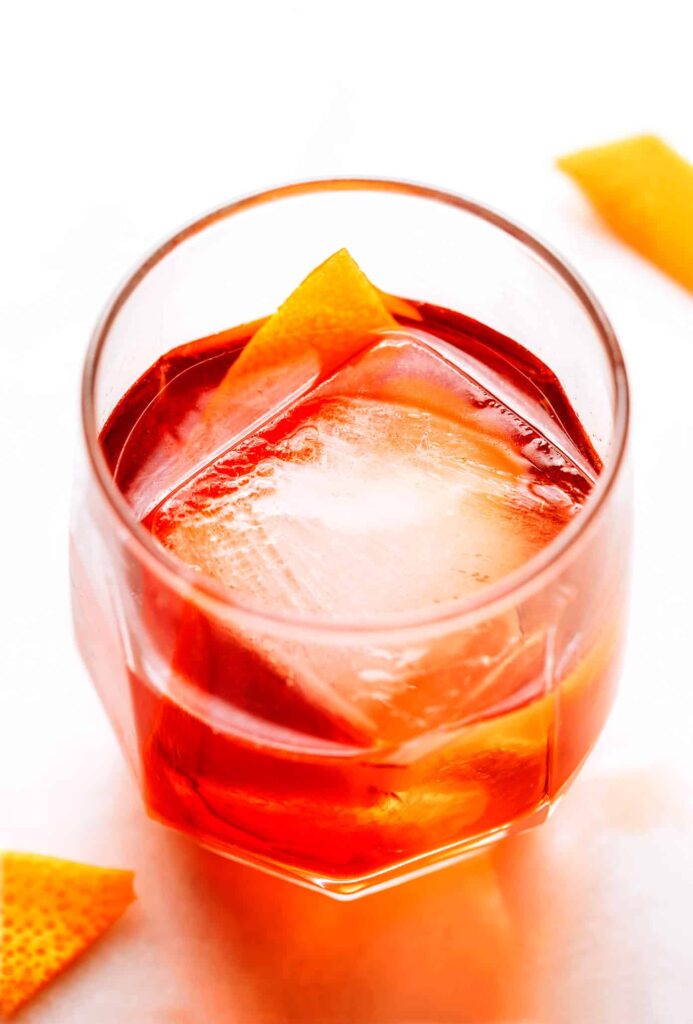
10) Boulevardier
The Boulevardier is a classic French cocktail with a rich, deep flavor. This drink combines bourbon or rye with Campari and sweet vermouth. It’s a great choice if you enjoy the taste of a Negroni but want something a bit different.
To make a Boulevardier, start with a mixing glass filled with ice. Add equal parts bourbon, Campari, and sweet vermouth. Stir the mixture well until it is chilled.
Next, strain the cocktail into a rocks glass over fresh ice. Garnish with an orange twist to add a touch of citrus aroma and flavor. For a variation, you can serve it up in a chilled cocktail glass.
The Boulevardier is both strong and smooth, with a balance of bitterness from the Campari and sweetness from the vermouth. It’s perfect for an evening drink, especially if you enjoy whiskey-based cocktails.
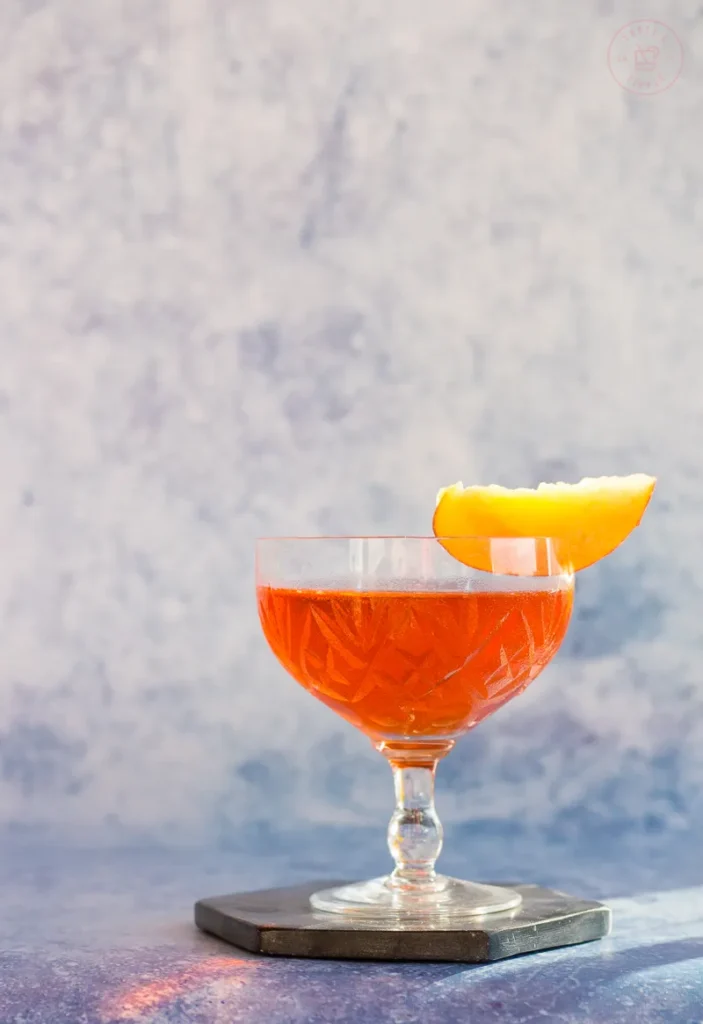
11) Le Boulevardier
Le Boulevardier is a classic French cocktail. It’s similar to a Negroni but uses bourbon instead of gin. This gives it a richer and deeper flavor.
To make Le Boulevardier, you need bourbon, sweet vermouth, and Campari. Pour these ingredients into a mixing glass filled with ice. Stir well until the drink is chilled.
Then, strain the mixture into a chilled cocktail glass. You can serve it up or over ice. For garnish, use an orange peel twist. This adds a citrus aroma to complement the drink’s bitterness and sweetness.
Le Boulevardier is perfect for those who enjoy a strong and balanced cocktail. The mix of bourbon, vermouth, and Campari creates a smooth yet intense flavor. It’s a great choice for a relaxing evening drink.
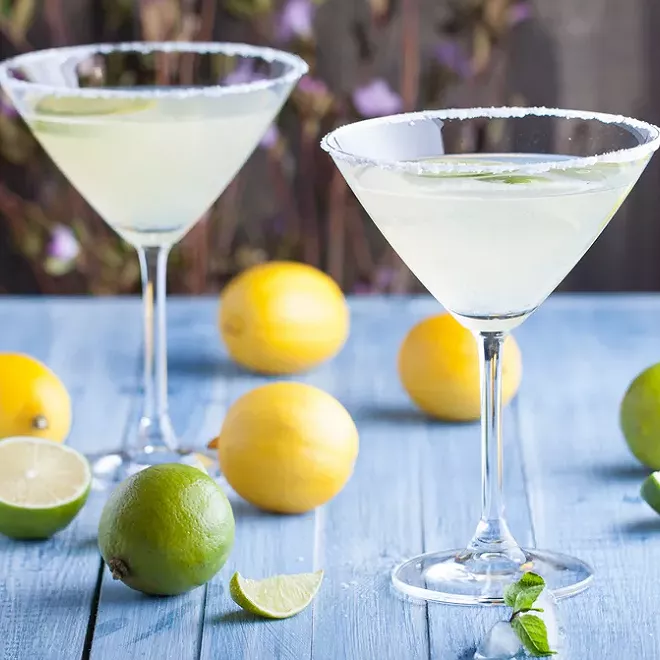
12) Marquisette
Marquisette is a delightful French cocktail from the southeast region of France. It is particularly popular during summer and at weddings due to its refreshing taste.
The main ingredients are white wine, sparkling wine or champagne, and citrus fruits like oranges and lemons. A splash of rum and some sugar can also be added for more flavor.
To prepare, slice the oranges and lemons into rounds. In a large punch bowl, mix white wine, rum, and sugar. Add the citrus slices and let the mixture sit in the fridge overnight.
Before serving, add sparkling wine or champagne and stir well. This gives Marquisette its characteristic bubbles. Pour the drink into small glasses and garnish with extra fruit slices if you like.
Enjoy this classic cocktail chilled, perfect for any sunny gathering or festive occasion.
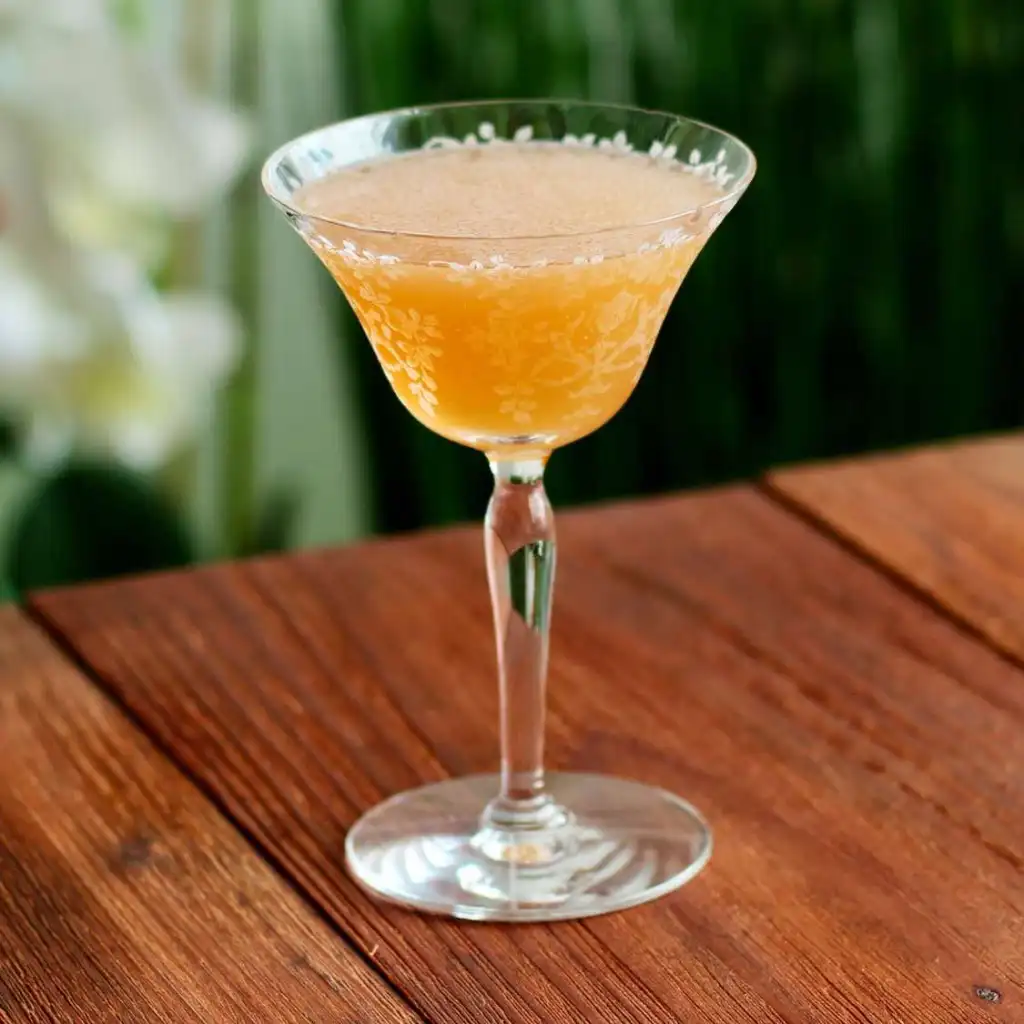
13) Champs-Élysées
The Champs-Élysées cocktail is a classic French drink with a rich history. Named after the famous Parisian avenue, it first appeared in the 1925 book “Drinks Long and Short” by Nina Toye and A. H. Adair. This cocktail is a variation of the Sidecar, another popular French drink from the early 20th century.
To make a Champs-Élysées, you need a blend of brandy, Green Chartreuse, lemon juice, simple syrup, and Angostura bitters. Shake these ingredients with ice and then strain into a chilled coupe or Nick & Nora glass. Garnish with a lemon twist for an extra touch of elegance.
You can think of the Champs-Élysées as a sour-style cocktail. This means it follows a basic 2:1:1 ratio of base spirit, sweet, and sour components. The Chartreuse adds a unique herbal note that sets it apart.
When you serve this drink, it offers a balanced mix of sweetness and tartness. It’s an excellent choice for anyone who appreciates historical cocktails with a bit of complexity.
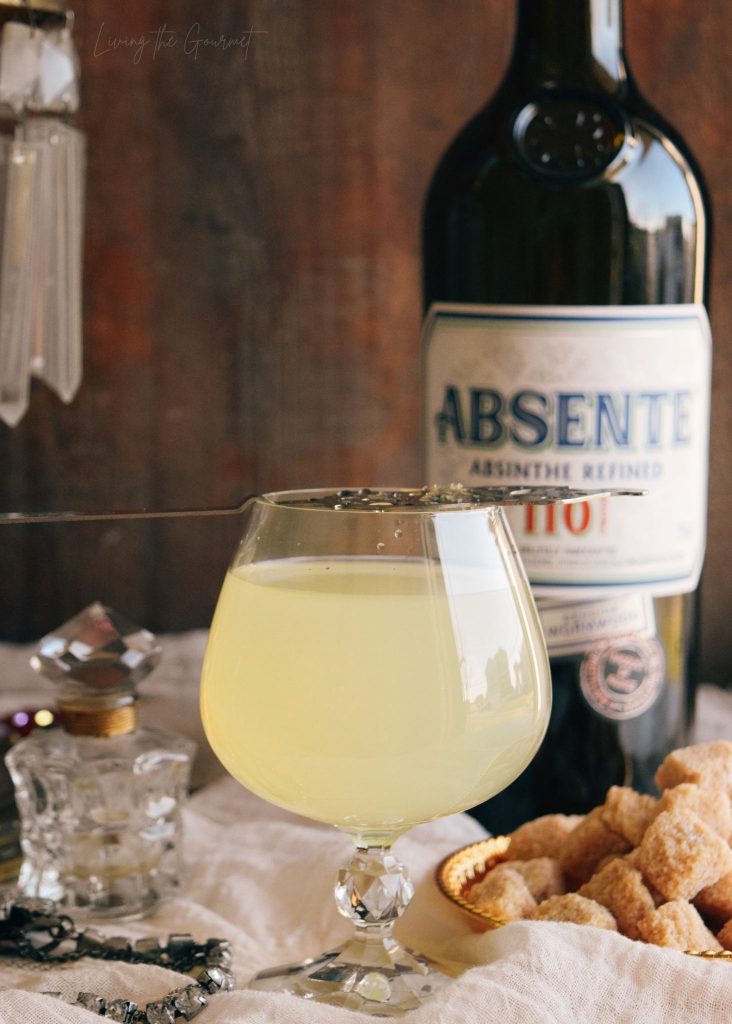
14) Absinthe Drip
Absinthe Drip is a traditional French cocktail that highlights the unique flavors of absinthe. To prepare this cocktail, you start by pouring absinthe into a glass.
Place a slotted absinthe spoon over the top of the glass, and set a sugar cube on the spoon. Slowly drip ice-cold water over the sugar cube, allowing it to dissolve and mix into the absinthe.
The classic method involves using an absinthe fountain or a bottle with a small hole for precise control. You typically add the same amount of water as absinthe, though some prefer a different ratio for a balanced taste.
This slow dilution releases the herbal aromas and enhances the flavor of the absinthe, making it smoother and more enjoyable. Remember, the sugar is optional. You can skip it for an unsweetened version.
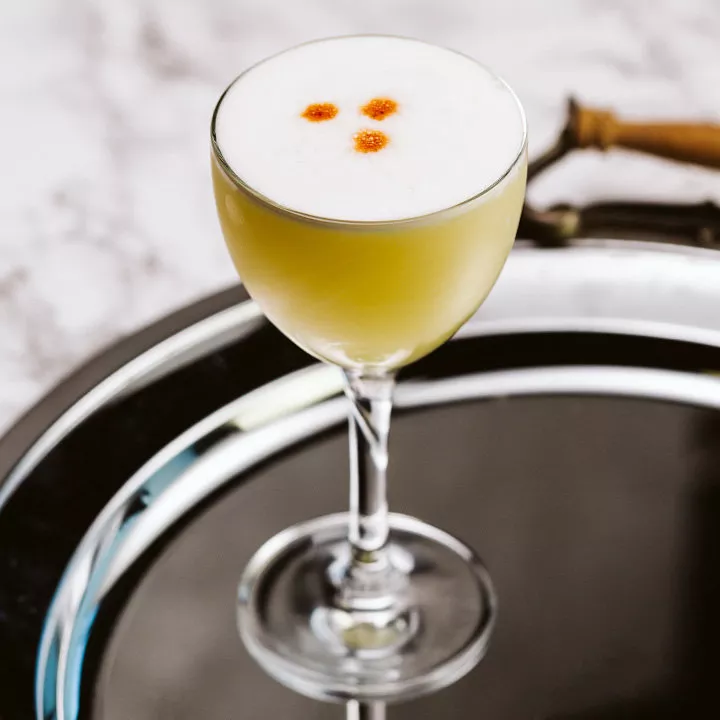
15) Pisco Sour
The Pisco Sour is a classic cocktail from Peru. It features pisco, a type of brandy, as the main ingredient. This drink is known for its balance of sweet, sour, and frothy textures.
To make a Pisco Sour, you need pisco, fresh lime juice, simple syrup, and an egg white. The egg white gives the cocktail its signature frothy top. Add these ingredients to a cocktail shaker.
Begin by shaking the mixture without ice. This is called a dry shake and helps create the froth. After that, add ice to the shaker and shake again until the mixture is well-chilled.
Strain the cocktail into a chilled glass. Traditional options include an old-fashioned glass, a sour glass, or even a Nick & Nora glass. For a finishing touch, add a few drops of Angostura bitters on top of the foam.
To enjoy your Pisco Sour, serve it immediately. The frothy texture and delightful balance of flavors make this drink a refreshing choice.
History Of French Cocktails
French cocktails have a rich and varied history, influenced by cultural events and evolving tastes. They reflect significant moments and trends in French society.
Origins And Influences
The origins of French cocktails can be traced back to the early 19th century. French mixologists began to explore new combinations of spirits and flavors. Paris, in particular, became a hub for cocktail creation.
The inauguration of significant landmarks, such as the famous cafes and bars in Paris, played a vital role. Cocktails like the “75 Cocktail,” or “French 75,” were inspired by historical events. The “1789” cocktail commemorates the storming of the Bastille. These drinks often use local ingredients like wine, champagne, and herbal liqueurs, emphasizing French craftsmanship.
Evolution Over Time
French cocktails have evolved significantly since their inception. In the early 20th century, the rise of jazz culture and the influence of American bartenders in Paris led to new creations. The “French Martini” emerged, showcasing flavors like black raspberry and pineapple.
Post-World War II, French cocktails saw a resurgence with the introduction of more modern, elegant recipes. The use of unique French liqueurs like Chartreuse and triple-sec became popular. With globalization, the cocktail scene in France continues to innovate, blending traditional recipes with contemporary trends.
You can see how these influences and changes have shaped a distinctive and dynamic cocktail culture in France. Each period contributed to the diverse, flavorful drinks that continue to be celebrated today.
Key Ingredients In French Cocktails
French cocktails are known for their elegance and rich flavors, often using high-quality ingredients. Some key components include a variety of spirits and liqueurs, fresh and local ingredients, and unique flavors and techniques.
Spirits And Liqueurs
Cognac is a staple in many French cocktails. This brandy offers a blend of fruity and spicy notes that add depth to drinks.
Champagne is essential for festive cocktails like the French 75, providing a refreshing bubbly touch.
Chartreuse, a herbal liqueur, brings complex flavors.
Crème de Cassis, a sweet blackcurrant liqueur, provides a rich fruitiness to drinks like Kir Royale.
These spirits offer a robust foundation to build flavorful and sophisticated cocktails.
Fresh And Local Ingredients
Using fresh citrus juices such as lemon and lime enhances the brightness of many French cocktails.
Herbs like mint and basil provide aromatic notes that elevate the taste experience.
Fruits like berries and melons are locally sourced and often used to make fruity infusions or garnishes.
These fresh ingredients ensure that each cocktail is bursting with natural flavors and aromas, making them refreshing and distinctive.
Unique Flavors And Techniques
French cocktails often employ unique techniques like muddling fresh herbs and fruits to release their essential oils and juices.Layering different flavors by carefully pouring ingredients to maintain the distinct taste profile of each layer is also common.
Infusions are used to create customized flavors by soaking herbs, fruits, or spices in spirits.
These methods introduce unique flavors and textures, setting French cocktails apart from others, and contributing to their reputation for sophistication and artistry.
How To Pair French Cocktails With Food
Pairing French cocktails with food can enhance the dining experience, making the flavors pop. This section covers two key ways to match food with French cocktails: by finding complementary flavors and by choosing drinks based on the occasion.
Complementary Flavors
When pairing food with French cocktails, think about matching flavors that naturally go well together. For example, a French Martini, with its raspberry and pineapple undertones, pairs wonderfully with chocolate desserts like mousse. The fruitiness enhances the richness of the chocolate without overwhelming it.
Another great match is the Kir Royale—a blend of crème de cassis and champagne—with appetizers like goat cheese crostini. The sweetness of the cassis balances the tanginess of the cheese, making it a delightful start to any meal.
For savory dishes, consider the French 75. This cocktail, made with gin, lemon juice, sugar, and champagne, complements seafood dishes like shrimp cocktail or oysters. The citrus notes and bubbles cut through the richness of the seafood, providing a refreshing contrast.
Occasion-Based Pairing
Your choice of French cocktail can also depend on the occasion. For a casual get-together, lighter cocktails like the Lillet Blanc Spritz—a mix of Lillet Blanc, soda, and a slice of citrus—are excellent. They are easy to drink and pair well with simple snacks like nuts and olives.
For more formal dinners, the Boulevardier stands out. Made with whiskey, sweet vermouth, and Campari, it’s suitable for hearty meals like beef bourguignon. The strong, bittersweet profile complements the richness of the dish, highlighting its savory notes.
For brunch gatherings, the Mimosa is a classic choice. Made with equal parts champagne and orange juice, it pairs perfectly with lighter fare like pastries or fruit salads. The orange juice adds a fresh, fruity angle that brightens up the meal.
